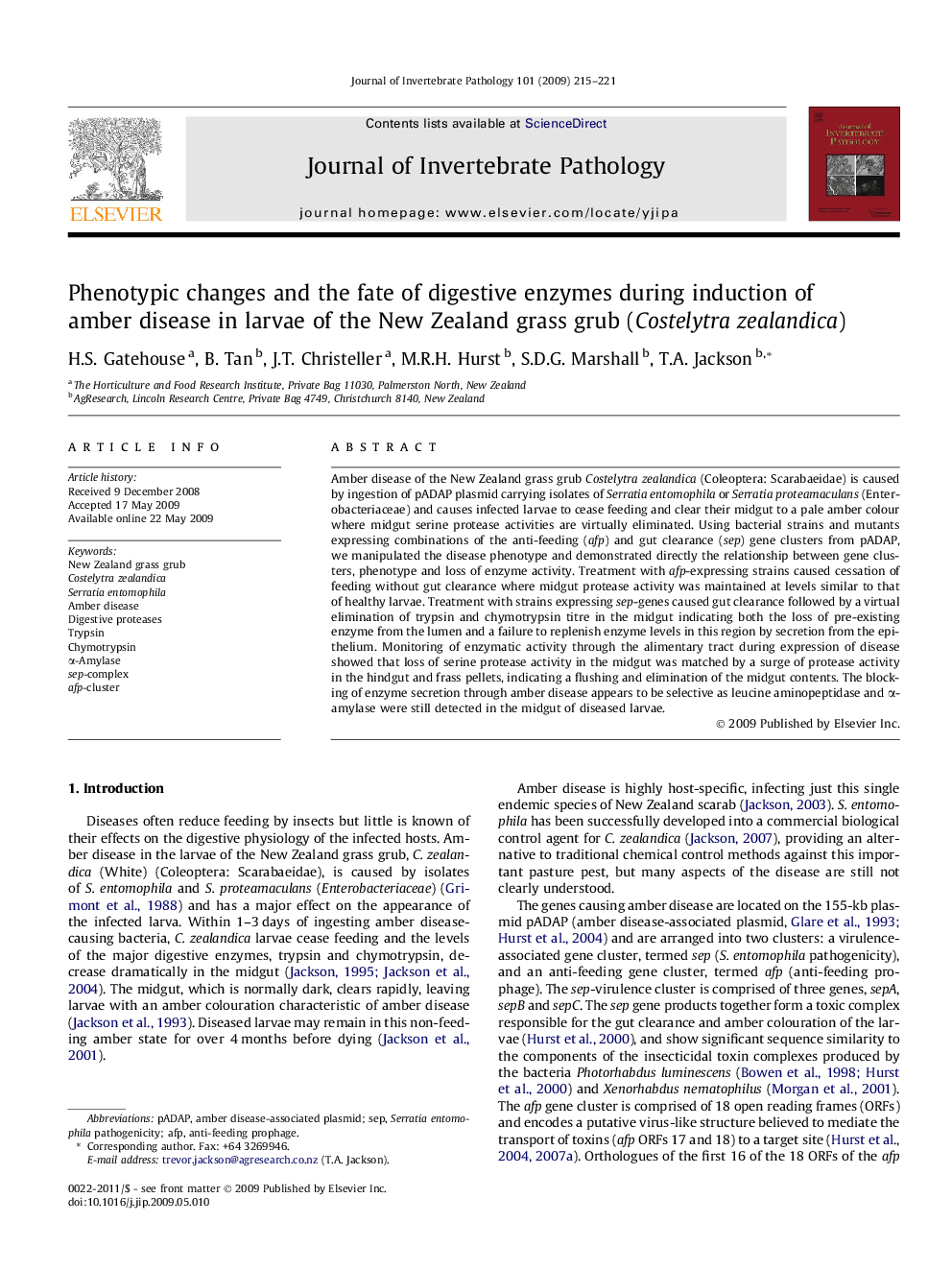| Article ID | Journal | Published Year | Pages | File Type |
|---|---|---|---|---|
| 4558353 | Journal of Invertebrate Pathology | 2009 | 7 Pages |
Amber disease of the New Zealand grass grub Costelytra zealandica (Coleoptera: Scarabaeidae) is caused by ingestion of pADAP plasmid carrying isolates of Serratia entomophila or Serratia proteamaculans (Enterobacteriaceae) and causes infected larvae to cease feeding and clear their midgut to a pale amber colour where midgut serine protease activities are virtually eliminated. Using bacterial strains and mutants expressing combinations of the anti-feeding (afp) and gut clearance (sep) gene clusters from pADAP, we manipulated the disease phenotype and demonstrated directly the relationship between gene clusters, phenotype and loss of enzyme activity. Treatment with afp-expressing strains caused cessation of feeding without gut clearance where midgut protease activity was maintained at levels similar to that of healthy larvae. Treatment with strains expressing sep-genes caused gut clearance followed by a virtual elimination of trypsin and chymotrypsin titre in the midgut indicating both the loss of pre-existing enzyme from the lumen and a failure to replenish enzyme levels in this region by secretion from the epithelium. Monitoring of enzymatic activity through the alimentary tract during expression of disease showed that loss of serine protease activity in the midgut was matched by a surge of protease activity in the hindgut and frass pellets, indicating a flushing and elimination of the midgut contents. The blocking of enzyme secretion through amber disease appears to be selective as leucine aminopeptidase and α-amylase were still detected in the midgut of diseased larvae.
